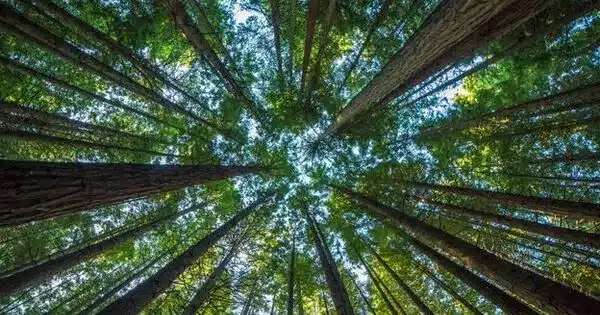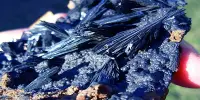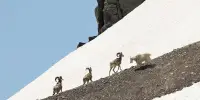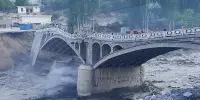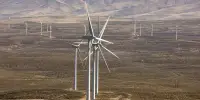The most serious threat to the planet’s ecosystems is deforestation, and new research has now mapped out exactly what happens when agriculture replaces forestry. Around 12,000 years ago, humans began farming. Small groups of people began growing peas, lentils, and barley independently along the Euphrates and Tigris rivers in what is now Iraq and Syria. They cut down trees to make room for fields and animals, and in doing so, they began to shape nature to meet human needs.
Our forefathers knew that once the forest was cleared and the fields were established, some of the animals and plants that had previously thrived would become extinct. We now know that modern, intensive agriculture is one of the world’s most serious threats to biodiversity. However, we know very little about what happens to the ecosystem’s plants, insects, and animals when a forest is cut down and the soil is ploughed and planted.
As a result, Gabor Lovei of Aarhus University’s Department of Agroecology and a group of Portuguese colleagues decided to investigate. There is still a remnant of the original forest on the Azorean island of Terceira. As a result, the island was an ideal location for studying how agriculture affects original nature.
Gabor Lovei, on the other hand, was taken aback by his results.
“The ecosystem’s changes were less extensive than I had anticipated.” True, there were fewer large and small animals in the fields, but activity in the ecosystem had actually increased on a number of other parameters,” he says.
Larvae are commonly consumed by rodents, birds, and lizards. Our findings indicate that there were significantly more of them in the forest, as more larvae vanished between the trees. The seeds also vanished faster in the forest.
Gabor Lovei
The unique nature on the Azores
Until 1427, only a few people had visited the Azores. Recent archaeological discoveries indicate that Vikings may have visited the islands hundreds of years before the Portuguese, but humans did not settle there permanently until the 15th century. The Azores were left untouched and lush in the middle of the Atlantic for thousands of years. Because of the islands’ combination of high heat, frequent precipitation, and volcanic soil, deep-green trees and plants thrived.
Everything changed in 1427, when Portuguese sailors by chance discovered the forested mountains in the middle of the Atlantic. Smallholders tired of royal favors lavished on manor houses in Portugal packed their picks, shovels, and hoes and sailed out to the Azores. They felled the forest and planted wheat and other crops.
Unlike on the mainland, the farmers harvested massive yields. Farmers flocked to the islands as word spread. Large areas of forest were quickly destroyed and replaced by agricultural land. Only the most mountainous and inaccessible areas of the forest, where the soil was too difficult to cultivate, were spared.
And it was this original forest that Gabor Lovai was able to use in his research.
“The forest is not original in Denmark – or most other parts of Europe. For thousands of years, humans have felled, replanted, and changed it. On the other hand, there is a completely original forest in the Azores – and it’s gold for this type of research,” he says.
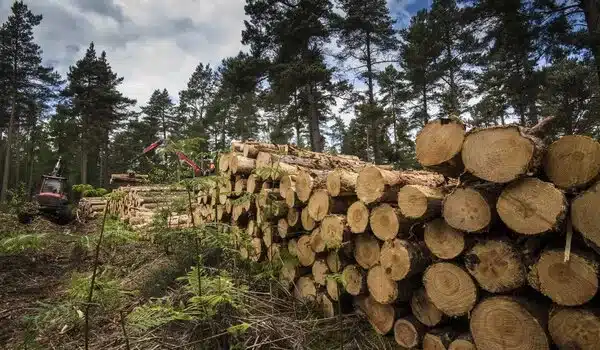
Gabor’s clever trick
When entomologists or ornithologists study how agriculture affects different species, they typically put on their hiking boots and head out into fields, meadows, and forest edges to record everything they find. They do so systematically, at various times of the day, and on multiple occasions. However, the method does not provide as much information about how the entire ecosystem responds to changes. It is only about animal populations. Gabor Lovei had to use other methods to investigate how the entire ecosystem reacted to forest felling and field establishment.
First, he planted a number of full-grown lettuces in an original forest, on cultivated fields, and on grazing fields for cows. The plants were left for two weeks. After the two weeks, he recorded the area covered by the lettuce, and how much had been eaten. In this way, he could measure the extent of the plant-eating activity in the ecosystem.
He repeated the same process with larvae to determine the scope of the hunt for insects. The more larvae eaten, the more animals – e.g. birds, rodents, and frogs – lived in the area. He also put out small boxes of seeds to see how many disappeared. He dug teabags ten centimeters into the soil to examine the activity of the microorganisms in the soil that break down organic matter. And finally, he planted strawberries to learn more about pollination in different areas.
Together, all these small experiments formed a picture of how the ecosystem as a whole changes when the forest is felled and fields are planted.
Fewer animals in the fields
The number of insects eaten was the most different of all the parameters Gabor Lovei studied. There were far fewer larvae in the forest than in the cultivated fields and grazing areas. He explains that this indicates that there is more wildlife in the forest.
“Larvae are commonly consumed by rodents, birds, and lizards. Our findings indicate that there were significantly more of them in the forest, as more larvae vanished between the trees,” he says. The seeds also vanished faster in the forest.
“Because the humidity is higher in the forests, a variety of invertebrates can live there. Animals that eat seeds, such as snails and beetles.”
He discovered no difference in pollination or the number of microorganisms in the soil. Plant pollination was actually slightly higher in the maize fields than in the forest. However, this does not necessarily imply that there are numerous bee species. On cultivated fields, there are usually only a few plant species. As a result, pollination is carried out by the same few bee species.
